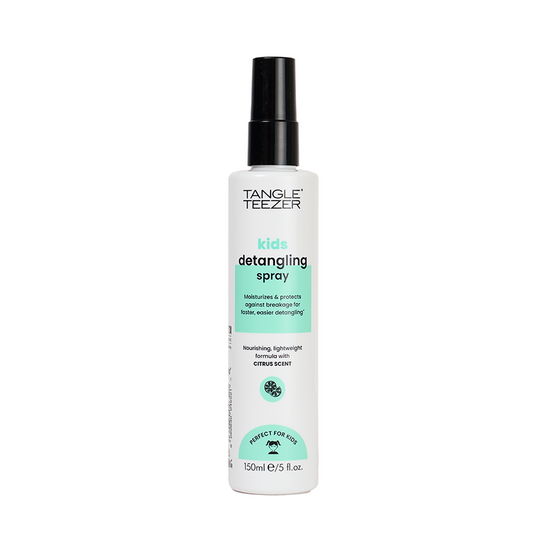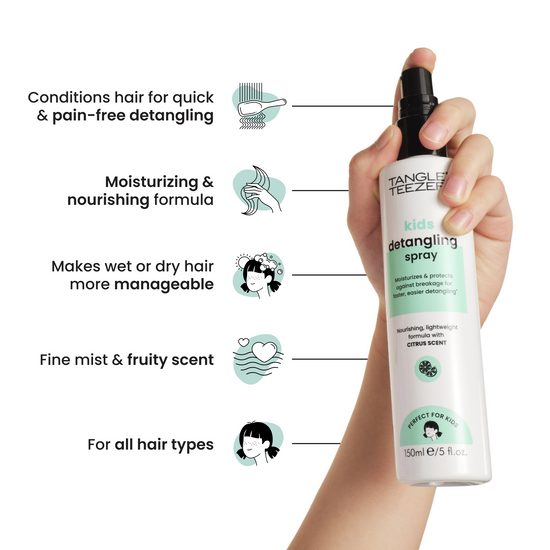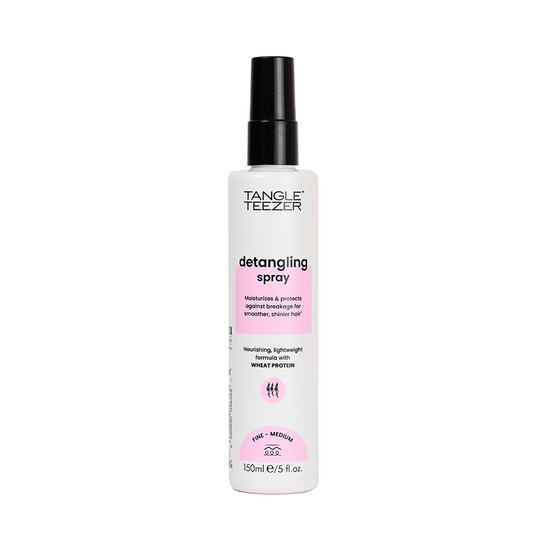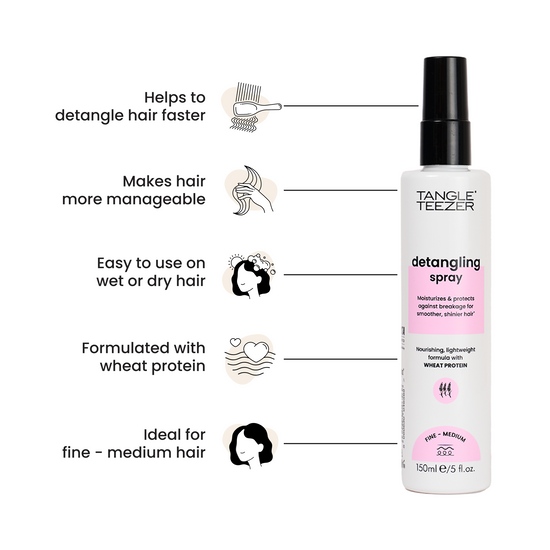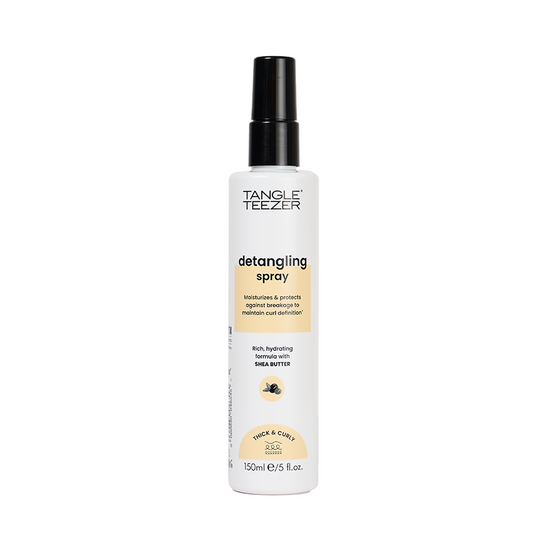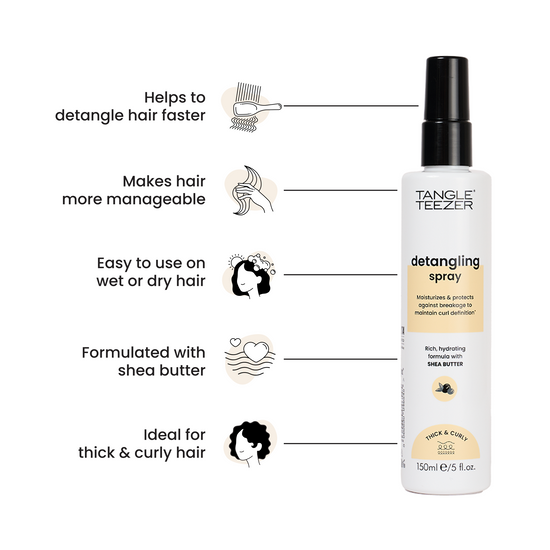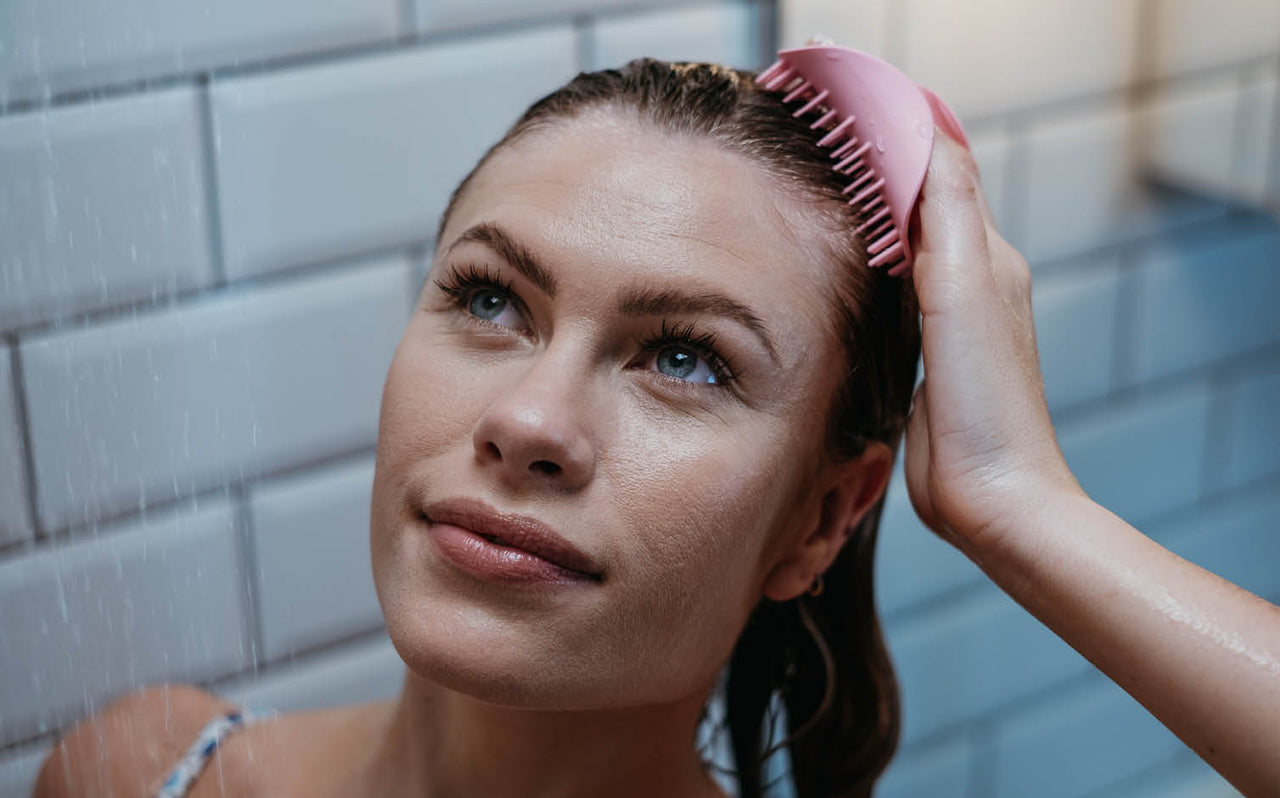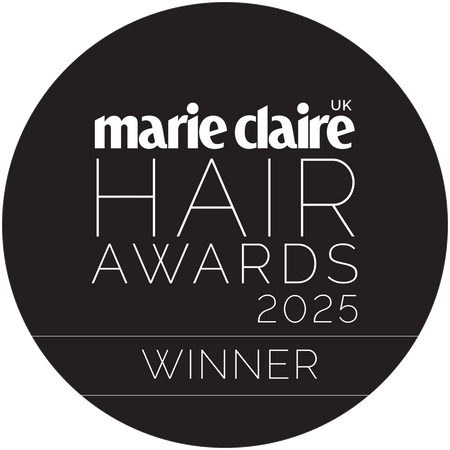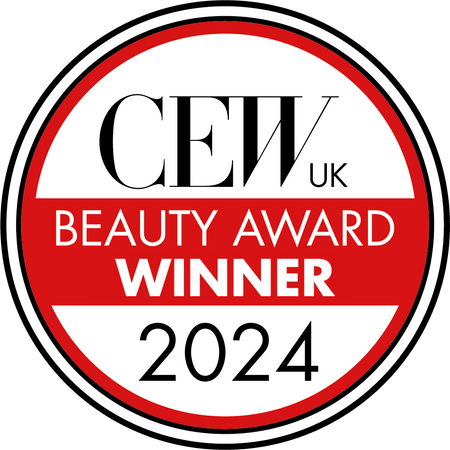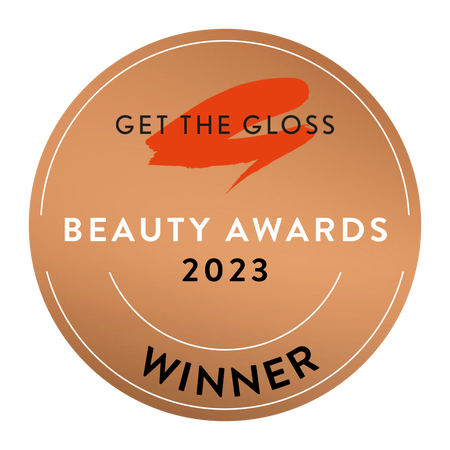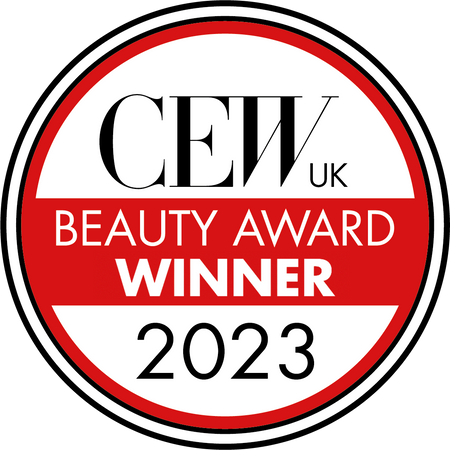Great hair starts with a healthy scalp - and a scalp brush is the perfect tool to help you combine hair care with self-care! From exfoliating away dead skin cells and product build-up to stimulating blood circulation, there are a whole bunch of reasons you should bring a scalp brush into your hair care routine.
The process also helps to destress your mind (as well as your scalp) so not only will you have healthy looking hair but your stress levels will drop as soon as you start massaging those magic pressure points! This innovative tool can help improve the look and feel of all hair types but for anyone that suffers from dandruff, a scalp brush could be a total game-changer - and the key to unlocking a happy, healthier scalp.
Still, trying to get your head around scalp massager brushes? No stress - we’ve got it all laid out for you, right here.
What is a scalp brush?
Has the concept of a scalp brush got you scratching your head? Let us explain. Firstly, a scalp brush can be called many things. Some call it a scalp scrubber, others call it a scalp stimulating brush and sometimes it’s a scalp massaging brush. At Tangle Teezer HQ, ours is The Scalp Exfoliator and Massager because - you’ve guessed it - it both exfoliates and massages your scalp (but more on that later…)
All of these brushes are created with the aim of removing dead skin cells and product build-up from your scalp and leaving you with healthy looking skin and hair. Just like it’s important to exfoliate your face as part of your skincare routine, scalp brushes help you revive and refresh the skin on your head. They tend to have smaller teeth that are designed to stimulate your scalp rather than detangle your hair and most come in a small handy design. Ours has been created to be super easy to handle, so it can slip into your hair care routine, but not out of your hands!
What are the benefits of using a scalp brush?
Bringing a scalp brush into your hair care routine has a whole bunch of benefits for your health, your head and, of course, your hair!
Helps with dandruff:
Scalp massager brushes help to remove the build-up of old skin cells and product that can lead to an itchy, flaky scalp and that telltale dandruff.
Helps to massage the scalp:
Massage is not only super relaxing but it also has a host of health benefits. A scalp massaging brush can help you get that spa experience at home and stimulate those pressure points that give you brain tingles.
Stimulates the scalp and hair follicles:
That tingly feeling you get when you exfoliate? That’s your hair follicle being unblocked and stimulated, allowing your hair to grow stronger and healthier.
Increases blood circulation:
Your blood carries all the lovely nutrients and oxygen around your body - and your skin loves it. Exfoliating encourages blood circulation to your head, so it gets all the nutrients it needs.
Helps to get products in and out of your scalp:
Not only do scalp brushes remove the leftover products that can lead to dandruff, but they can also help apply products - from oil treatments to anti-dandruff shampoos - deeper into your scalp.
How do you use a scalp brush?
New to the world of scalp brushes? Let us walk you through it.
If you want to give your scalp a bit of a detox, use with shampoo or scalp treatments on wet hair. Apply your chosen products, then grab your scalp brush and use in circular motions (or sweeping strokes from the front of the scalp to the nape of the neck, if you prefer) to really work the products in - and then rinse as normal!
You can use a scalp brush as often as you like - although we would recommend once a week. Whilst scalp exfoliation is great for reducing dandruff and soothing itchy skin, you don’t want to over-exfoliate and irritate your scalp even more. If you notice you have damaged skin or suffer from conditions like psoriasis, we would suggest taking a break from your scalp brush until your skin is healed. Also hot tip - never use our scalp brush with heat, this is more about self-care than styling.
Does a scalp brush get rid of dandruff?
Whilst we can’t promise that a scalp brush will solve all of your dandruff problems, it can definitely help. To understand how it does that, we need to take a brief trip to biology class.
Scalp irritation and flakiness (aka dandruff) is due to issues with your scalp ecosystem - or microbiome. There’s a delicate balancing act of various elements going on in your scalp, that you may not even be aware of!
Firstly there’s your sebum, the oil that keeps your skin and hair moisturised. Then there are your dead skin cells (totally normal) and finally, there’s something called Malassezia, which is a fungus that forms part of your scalp’s microbiome. All of these things are a natural part of your scalp’s makeup but sometimes this ecosystem gets out of control.
People with dandruff often get irritated by their Malassezia and their body reacts by trying to produce more skin cells and shed the old ones. Malassezia feeds off sebum, so more sebum equals more Malassezia and that equals more skin shedding. Before you know it you’ve got those visible skin flakes on your head and clothes. Add a build-up of product into the situation, and you’ve got a recipe for dandruff disaster.
A scalp brush can help break this cycle by removing the build-up of sebum, dead skin cells and Malassezia and making sure leftover product doesn’t make the situation worse!
Scalp Brush Routine for dandruff
Want to decrease that dandruff? Combine a scalp brush with gentle but effective products in this 4 step routine and your hair and scalp will thank you for it.
Step 1 - Exfoliate Wet Hair
When you get in the shower, start by exfoliating your hair to remove the dead skin cells and any product you have leftover from the previous day. This will unblock your hair follicles and prepare your scalp to soak up all of your anti-dandruff product!
Step 2 - Anti-Dandruff Shampoo or Treatment
Now it’s time to apply your product. It’s important to find a product that works for you - many anti-dandruff shampoos and treatments contain Coal Tar or Salicylic Acid - two ingredients that are great for reducing itchiness. Use your scalp brush to really work your chosen product into the hair, giving its effectiveness an even bigger boost but make sure to thoroughly rinse, to avoid more build-up!
Step 3 - Condition
Conditioning your hair will lock in moisture - which is something a dry, itchy scalp definitely needs. However, some cosmetic conditioners can actually wash away the active ingredients in your shampoo, so make sure you use a treatment that will work with - and not against - your anti-dandruff shampoo.
Step 4 - Rinse with cold water
We’re not going to make you take a full-on ice bath - but rinsing with cold water will help to close your hair follicle. Not only will this lock all the nutrients from your routine in so they can work their magic on your scalp, but it will also stop things that irritate your scalp - like pollution - getting in. Plus point - if you can bear a cold shower it will also close your hair cuticle - making it seriously shiny!
What are the benefits of a scalp massage?
We’re willing to admit that our favourite part of going to the hairdresser is when they drop that surprise scalp massage during the hair wash. It. Is. Heaven. But massage is not only a super relaxing self-care moment - it can actually improve the health of your scalp too. Here’s just a few of the benefits…
Improve blood circulation in the head and neck:
Like exfoliating, massage encourages your blood to head to your head. This circulation not only brings oxygen and nutrients to your scalp but also removes toxins and pressure that can cause tension!
Conditioning the scalp to avoid flaking and dryness and itchiness:
Every time you massage your scalp, you distribute your hair’s natural oils evenly, giving your scalp that much-needed moisture that will reduce itchiness.
Helps strengthen roots:
Whilst studies into whether scalp massage can help to increase hair growth are still going on, one thing we do know is that it strengthens your roots and encourages your hair to grow thicker and healthier!
Does massaging your scalp help with dandruff?
Whilst following our 4 step exfoliating routine is the best way to reduce dandruff, massage can also play a role in keeping flaky skin at bay! As scalp massage can be less intense than exfoliation, you can do it more than once a week, so it’s a great way to support your overall routine. By increasing blood flow to the head, it helps to keep your scalp happy and supplies it with the nutrients it needs to promote the growth of healthy skin cells.
How do you massage your scalp?
Find it difficult to recreate that salon scalp massage effect? Our Scalp Exfoliator and Massager brush is the perfect way to give yourself brain tingles from the comfort of home. Whilst we recommend exfoliating your scalp in the shower, so all those dead skin cells and product wash away, a scalp massage can be enjoyed on wet or dry hair. Simply take your brush and press down on the scalp to stimulate your pressure points (and get those brain tingles going!).
We find the most effective pressure points are at the base of your neck and your temples but you might discover a new way to hit the spot that works for you! Listen to your body and apply as much pressure as you feel comfortable with - we recommend massaging for at least 3 minutes but you can massage for as long as you need to feel super relaxed (or until you’re so zenned out that you fall asleep - whichever happens first!)
